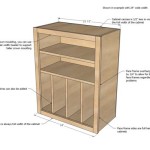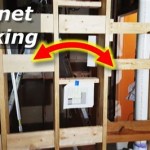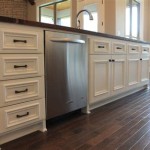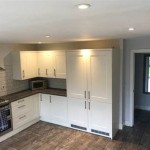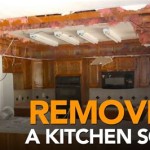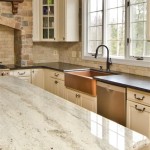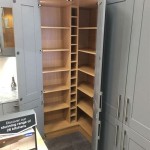Covers For Kitchen Cabinets: A Comprehensive Guide
Kitchen cabinets are a significant investment and a focal point of any kitchen's design. Protecting them from wear and tear, spills, and fluctuating temperatures is crucial for maintaining their longevity and aesthetic appeal. Covers for kitchen cabinets offer a practical solution for preserving the condition of cabinets, providing protection, and potentially enhancing the overall look of the kitchen. This article will explore various types of covers, their benefits, and factors to consider when selecting the appropriate cover for specific needs.
The term "covers" in this context encompasses a range of products and solutions designed to protect kitchen cabinets. These can range from easily removable contact papers and films to more complex, custom-fitted solutions. The choice of cover often depends on the degree of protection desired, the style of the kitchen, and budget considerations. Understanding the available options is the first step in ensuring the cabinets are adequately protected while maintaining the desired aesthetic.
Types of Kitchen Cabinet Covers
Various types of covers are available for kitchen cabinets, each offering a different level of protection, ease of installation, and visual impact. These can be broadly categorized based on their material and application method.
Contact Paper and Adhesive Films: These are thin, self-adhesive sheets that can be applied directly to the cabinet surfaces. They are typically made of vinyl or similar materials and come in various colors, patterns, and textures. Contact paper and adhesive films are a cost-effective option for protecting cabinets from scratches, stains, and minor damage. They are relatively easy to install, requiring only basic tools like a ruler, scissors, and a smoothing tool. However, the adhesive can sometimes leave residue upon removal, and they are not as durable as other options.
Cabinet Door Skins: These are thin panels, often made of laminate or wood veneer, designed to be adhered to existing cabinet doors. They offer a more substantial upgrade than contact paper, providing a new surface for the doors and potentially changing the overall style of the kitchen. Cabinet door skins can be a good option for those looking to refresh the look of their cabinets without completely replacing them. Professional installation is often recommended to ensure a seamless and durable finish. They can be customized with different edge profiles and finishes, offering a wider range of design options.
Reusable Shelf Liners: Primarily intended for protecting the inside of cabinets, reusable shelf liners are often made of non-adhesive, slip-resistant materials like rubber or foam. They provide a cushioned surface that prevents items from scratching the cabinet shelves and absorbs spills. These liners are easy to install, clean, and replace, making them a practical choice for protecting the interior of cabinets. They come in various sizes and can be easily cut to fit any shelf dimensions.
Cabinet Refacing: While not technically a "cover" in the strict sense, cabinet refacing involves replacing the cabinet doors and drawer fronts and applying a new veneer to the existing cabinet boxes. This process effectively gives the cabinets a completely new look while preserving the existing cabinet structure. Refacing is a more expensive option than contact paper or cabinet door skins, but it offers a more durable and long-lasting solution. Professional installation is typically required for cabinet refacing.
Paint and Protective Coatings: Applying a fresh coat of paint or a protective coating such as polyurethane or varnish can also be considered a form of cover. These finishes provide a durable barrier against moisture, scratches, and stains. While painting requires more preparation and skill, it offers complete customization in terms of color and finish. Protective coatings can be applied over existing paint to enhance its durability and resistance to wear and tear.
Custom-Made Cabinet Covers: In certain situations, custom-made covers may be the best option. These can be crafted from various materials, including fabric, plastic, or metal, and are tailored to fit specific cabinet dimensions and shapes. Custom covers can provide a high level of protection and can be designed to complement the kitchen's overall design. They are often used in commercial kitchens or areas with high usage and potential for damage.
Benefits of Using Kitchen Cabinet Covers
The implementation of kitchen cabinet covers offers a multitude of benefits, extending beyond simple aesthetics and contributing significantly to the overall longevity and functionality of the kitchen space. These benefits encompass protection, design flexibility, and cost-effectiveness.
Protection from Damage: The primary benefit of using kitchen cabinet covers is protection from damage. Cabinet surfaces are vulnerable to scratches, spills, and the accumulation of grease and grime. Covers provide a barrier against these elements, preserving the original finish of the cabinets. This is particularly important in high-traffic areas or in homes with children or pets. By preventing damage, covers can significantly extend the lifespan of the cabinets and reduce the need for costly repairs or replacements.
Extending Cabinet Lifespan: By shielding cabinets from daily wear and tear, covers contribute to their extended lifespan. Exposure to moisture, sunlight, and physical impact can degrade the cabinet finish over time, leading to discoloration, warping, and cracking. Covers act as a protective shield, minimizing these effects and preserving the cabinets' structural integrity. This is especially important for cabinets made of wood or other susceptible materials.
Easy Cleaning and Maintenance: Kitchen cabinet covers can simplify the cleaning and maintenance process. Many covers are designed to be easily wiped clean or even removed and washed. This eliminates the need for harsh cleaning chemicals that could damage the original cabinet finish. Removable covers can also be replaced if they become heavily soiled or damaged, providing a quick and easy solution for maintaining a clean and presentable kitchen.
Cost-Effective Renovation: Replacing kitchen cabinets is a significant expense. Using covers can provide a cost-effective alternative for renovating the kitchen's look without undertaking a complete remodel. Cabinet door skins, refacing, or even a fresh coat of paint can transform the kitchen's appearance at a fraction of the cost of new cabinets. This allows homeowners to update their kitchen's style without breaking the bank.
Enhanced Aesthetics and Design Flexibility: Kitchen cabinet covers offer a wide range of design options, allowing homeowners to customize the look of their kitchen. Contact paper and cabinet door skins are available in various colors, patterns, and textures, providing endless possibilities for creating a unique and personalized space. Covers can also be used to update the kitchen's style to match changing trends or personal preferences. This flexibility allows homeowners to keep their kitchen looking fresh and modern without the expense of a complete renovation.
Factors to Consider When Choosing Covers
Selecting the right covers for kitchen cabinets requires careful consideration of several factors. Making an informed decision hinges on understanding the specific needs of the kitchen environment, the desired level of protection, and the budget available. These considerations ensure that the chosen covers are both effective and aesthetically pleasing.
Material and Durability: The material of the cover is a crucial factor to consider. Different materials offer varying levels of protection and durability. For example, vinyl contact paper is a cost-effective option for light protection, while laminate cabinet door skins offer a more durable and long-lasting solution. Consider the specific needs of the kitchen environment and choose a material that can withstand the expected wear and tear. High-traffic areas or kitchens with children or pets may require more durable covers.
Ease of Installation: The ease of installation is another important consideration, particularly for DIY projects. Contact paper and reusable shelf liners are relatively easy to install, requiring only basic tools and skills. Cabinet door skins and refacing, on the other hand, may require professional installation to ensure a seamless and durable finish. Consider the level of DIY skill and the time available for installation when choosing covers. If professional installation is required, factor in the cost of labor when budgeting for the project.
Aesthetic Appeal: The aesthetic appeal of the covers should also be considered. Choose covers that complement the existing kitchen décor and reflect personal style. Consider the color, pattern, and texture of the covers and how they will integrate with the overall design of the kitchen. Samples can be obtained to assess how the covers look in the actual kitchen environment. It's crucial to make sure the covers are visually appealing and enhance the overall look of the kitchen.
Maintenance Requirements: The maintenance requirements of the covers should also be taken into account. Choose covers that are easy to clean and maintain. Some materials may require special cleaning products or techniques to prevent damage or discoloration. Consider the time and effort required to maintain the covers and choose options that fit lifestyle and cleaning habits. Removable and washable covers can simplify the cleaning process and ensure a long-lasting, presentable appearance.
Budget Considerations: The budget available for the project is a key factor in determining the type of covers to choose. Contact paper and reusable shelf liners are the most cost-effective options, while cabinet refacing and custom-made covers are the most expensive. Set a budget before starting the project and prioritize the most important needs. Consider the long-term benefits of each option and choose covers that offer the best value for money. Investing in durable and long-lasting covers can ultimately save money in the long run by reducing the need for repairs or replacements.
Cabinet Type and Condition: The type and condition of the existing cabinets will affect the choice of covers. For cabinets with a smooth, flat surface, contact paper and cabinet door skins can be easily applied. For cabinets with intricate details or damaged surfaces, refacing or painting may be a better option. Evaluate the condition of the cabinets before choosing covers and consider any necessary repairs or preparations. Ensure that the chosen covers are compatible with the cabinet material and design.

Er S Cabinet Cover Up Brighten Your Kitchen Cabinets Renovation

How To Update Cabinets Using Contact Paper Al Kitchen Makeover Cover Apartment

610 X 5 M 24 Gloss Self Adhesive Kitchen Cupboard Door Drawer Wardrobe Cover

Er S Cabinet Cover Up Brighten Your Kitchen Cabinets Hometalk

Kitchen Cabinet Cover Panels Front Life

How To Make Over A Kitchen With Contact Paper Covering Cabinets Countertops And Appliances

How To Easily Cover Cabinet Bottoms Onegirlmanyideas

Gloss Pink Wallpaper Contact Paper Oil Water Proof Kitchen Cupboard Door Cover

Closing The Space Above Kitchen Cabinets Remodelando La Casa

Plain Shiny Orange Kitchen Cabinet Liner Adhesive Contact Paper For Cover Self

